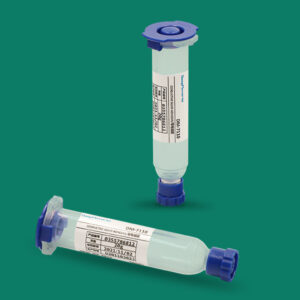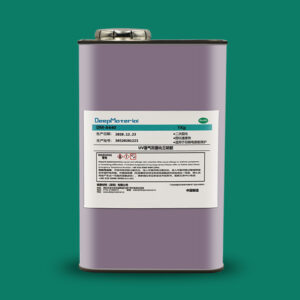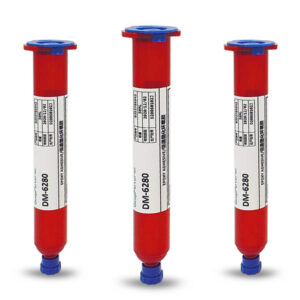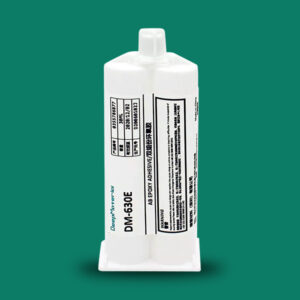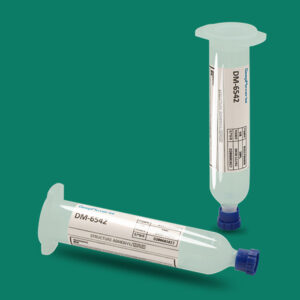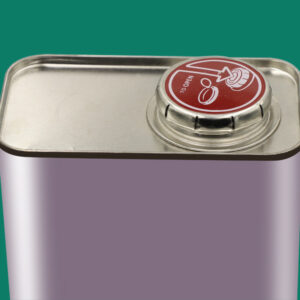Investigation on the Fire Prevention Effectiveness of Automatic Fire Suppression Materials for Glues Used in Bonding Different Materials
Investigation on the Fire Prevention Effectiveness of Automatic Fire Suppression Materials for Glues Used in Bonding Different Materials
In modern industry and daily life, glues are widely used for bonding various materials, including metals, plastics, and woods. With the enhancement of fire safety awareness, the application of Automatic Fire Suppression Materials (AFSM) in scenarios where glues are used has received increasing attention. However, regarding whether the same AFSM can effectively play a fire prevention role in different material bonding scenarios, this involves complex issues in multiple fields such as materials chemistry, thermology, and fire dynamics, which are worthy of in-depth exploration.
 Overview of the Working Principle of Automatic Fire Suppression Materials
Overview of the Working Principle of Automatic Fire Suppression Materials
- Heat Absorption and Cooling: Many AFSMs absorb a large amount of heat through their own phase transitions (such as melting, sublimation, etc.) or chemical reactions, reducing the temperature of the surrounding environment and preventing the spread and propagation of flames. For example, some inorganic compounds containing crystal water release the crystal water when heated, absorbing a large amount of heat and cooling the surrounding combustible substances and air.
- Oxygen Isolation: Some AFSMs will form a dense isolation layer after being heated, cutting off the contact between oxygen and combustible substances, thus interrupting the necessary conditions for combustion. For instance, intumescent fire-retardant coatings expand to form a porous carbonaceous foam layer at high temperatures, effectively blocking oxygen.
- Free Radical Suppression: The combustion process is a free radical chain reaction. Certain AFSMs can release substances that capture free radicals, interrupting the free radical chain reaction and making it difficult for combustion to continue. Halogen-based flame retardants were widely used based on this principle, but they are gradually being replaced due to their great harm to the environment.
Analysis of the Interaction between Glues and AFSMs in Metal Bonding
- Characteristics of Commonly Used Glues for Metal Bonding: The glues used for metal bonding are mostly structural adhesives, such as epoxy-based glues, which have high strength, chemical corrosion resistance, and good heat resistance. Epoxy adhesives form a three-dimensional cross-linked structure through a curing reaction and adhere tightly to the metal surface. They have high chemical stability and are not easily decomposed at normal operating temperatures.
- Effectiveness of AFSMs in Metal Bonding Scenarios: Metals are good conductors of heat. In the event of a fire, heat will be rapidly conducted within the metal. For the bonded parts of metals, the heat absorption and cooling effect of AFSMs can effectively reduce the risk of the glue losing its adhesive force due to high temperatures. For example, water-based AFSMs can use the evaporation of water to absorb a large amount of heat, preventing the metal temperature from being too high and protecting the adhesive properties of the glue. At the same time, the isolation layer formed by the oxygen-isolating AFSM on the metal surface can prevent the glue from reacting with oxygen and being oxidized and decomposed at high temperatures, maintaining the bonding strength. Since metals themselves are non-combustible, the main function of AFSMs is to protect the glue and prevent the fire from spreading through the metal structure. Under the condition of reasonable selection and application of AFSMs, they can play a good fire prevention role.
Analysis of the Interaction between Glues and AFSMs in Plastic Bonding
- Characteristics of Commonly Used Glues for Plastic Bonding: There are a wide variety of plastics, and different plastics require different glues. For example, acrylate-based glues are often used for bonding polar plastics. They have a fast curing speed and good adhesion to various plastics. However, most plastics are organic polymer materials, which are flammable and have poor thermal stability.
- Challenges and Effectiveness of AFSMs in Plastic Bonding Scenarios: Plastics are prone to melting and dripping in a fire, spreading the fire. In the plastic bonding scenario, AFSMs not only need to protect the glue but also suppress the combustion of plastics. For free radical suppression type AFSMs, they need to be selected according to the characteristics of free radicals generated during the combustion of different plastics. For example, phosphorus-based AFSMs have a good inhibitory effect on the free radicals generated during the combustion of some plastics, but have a poor effect on other plastics. The AFSMs that form an isolation layer on the plastic surface need to consider the compatibility with the plastic. If they are not compatible, the isolation layer may fall off and fail to play a fire prevention role. However, by reasonably designing the formula of AFSMs, such as adding compatibilizers to improve the compatibility with plastics and optimizing the working mechanism of AFSMs according to the combustion characteristics of plastics, AFSMs can also effectively play a fire prevention role to a certain extent in the plastic bonding scenario.
Analysis of the Interaction between Glues and AFSMs in Wood Bonding
- Characteristics of Commonly Used Glues for Wood Bonding: Wood is a porous organic material. Commonly used glues such as white glue (polyvinyl acetate emulsion) can penetrate into the pores of the wood and form a firm bond after curing. Wood is rich in flammable components such as cellulose and has a relatively low ignition point.
- Effectiveness of AFSMs in Wood Bonding Scenarios: The main task of AFSMs in wood bonding is to prevent the wood from burning. Boron-based AFSMs can react with the cellulose in the wood to form a non-flammable char layer and also play a protective role at the glued joint. Heat absorption and cooling type AFSMs can slow down the heating rate of the wood and prolong its ignition time. However, due to the porous structure of the wood, the uniformity of the penetration and distribution of AFSMs has a great impact on the fire prevention effect. If the AFSMs cannot fully penetrate into the interior of the wood and only act on the surface, when the internal wood burns due to heat, it may still lead to the failure of the bond and the spread of the fire. By pretreating the wood (such as impregnation treatment) to make the AFSMs penetrate and distribute better, the fire prevention effectiveness of AFSMs in the wood bonding scenario can be significantly improved.
Factors Affecting the Fire Prevention Effectiveness of AFSMs in Bonding Different Materials
- Differences in Thermal and Physical Properties of Materials: Metals, plastics, and woods have different thermal physical properties such as thermal conductivity and specific heat capacity. Metals have high thermal conductivity, while plastics and woods have low thermal conductivity. This requires AFSMs to adjust the dosage and action mode according to the thermal physical properties of the materials. On metals, AFSMs that can absorb heat and cool down more quickly may be needed, while on plastics and woods, more attention should be paid to forming a stable isolation layer and suppressing combustion.
- Chemical Composition and Reactivity of Glues: Different glues have different chemical compositions and curing reactions. Some AFSMs may react chemically with the components in the glue, affecting their fire prevention performance. For example, some AFSMs containing active groups may react with the curing agent in the epoxy glue, changing the curing process of the glue and the fire prevention effect of the AFSMs.
- Compatibility of AFSMs with Materials and Glues: The compatibility of AFSMs with different materials and glues is crucial. Incompatibility will lead to uneven dispersion of AFSMs on the material surface or in the glue layer, reducing the fire prevention effect. For example, in plastic bonding, if the AFSM is not compatible with the plastic, it cannot adhere closely to the plastic surface to form an effective isolation layer.
Experimental Research and Case Analysis
- Experimental Design: Select metals (aluminum alloy), plastics (polypropylene), and woods (pine wood) as base materials respectively, and use the same general-purpose epoxy glue for bonding. For each type of bonded specimen of the materials, apply the same intumescent AFSM. Set different fire simulation conditions, such as different temperatures and fire source intensities, and observe the fire prevention situation of the bonded parts, including whether they are ignited and the change of the adhesive strength of the glue.
- Experimental Results and Analysis: In the metal bonded specimens, the AFSM effectively delayed the time when the glue lost its adhesive force due to high temperatures and maintained the integrity of the metal structure within a certain period. In the plastic bonded specimens, although the AFSM suppressed some of the combustion, due to the melting and dripping of the plastic, there was still some fire spread. In the wood bonded specimens, the char layer formed by the AFSM protected the wood and the glue to a certain extent, but due to the penetration problem of the wood interior, the deep wood still had a combustion phenomenon. Through the case analysis of the use of AFSMs at the bonded parts of different materials in actual fire accidents, the trend of the experimental results is also verified, that is, the fire prevention effects of AFSMs in bonding different materials are different, but reasonable application can still provide a certain degree of fire prevention protection.
 Conclusion
Conclusion
The same automatic fire suppression material suitable for glues cannot effectively play a fire prevention role in the same way in the bonding of different materials such as metals, plastics, and woods. Although the basic fire prevention principle of AFSMs remains unchanged, due to the differences in the thermal physical properties, combustion characteristics, and interactions with glues of different materials, it is necessary to optimize the selection and design of AFSMs according to the specific materials and application scenarios. Through in-depth research on the relationships between materials, improving the formula and application process of AFSMs, it is expected to improve their fire prevention effectiveness in different material bonding scenarios, providing a more reliable guarantee for fire safety. In the future, further in-depth research is needed in aspects such as the relationship between the micro-structure of materials and their macroscopic fire prevention performance to promote the better application of AFSM technology in the bonding field.
For more about investigation on the fire prevention effectiveness of automatic fire suppression materials for glues used in bonding different materials, you can pay a visit to DeepMaterial at https://www.epoxyadhesiveglue.com/category/epoxy-adhesives-glue/ for more info.





